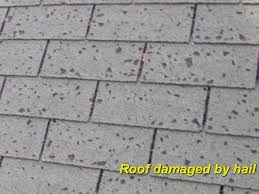How does a wind storm damage my roof & what to look for in Columbus Ohio?
How does a wind storm damage my roof & what to look for in Columbus Ohio?
Wind is one of the most common causes of roof damage in Columbus Ohio. Any type of roofing material can be harmed by wind but asphalt shingles, roll roofing and many roofing membranes are the most susceptible to wind damage. Wood and metal roofing are less prone to wind damage, and concrete, tile and slate roofing generally only sustain indirect damage from wind storms. Mike’s Roofing Inc repairs storm damage in Columbus Ohio. Call now for a free roof inspection.
Wind harms a roof in two ways. One way is by the direct action of the wind. Moving air creates differences in  pressure as it passes over and around stationary objects. Wind can create negative pressure, or suction, which lifts shingles and other roofing materials. Wind also causes positive pressure as it pushes against the roof surface. The varying positive and negative pressures can cause loose shingle edges to move slightly thus becoming even looser in just a short time. As the roofing material loosens the wind is able to penetrate further underneath. In the case of very high winds asphalt shingles or membrane roofing can be shredded or completely lifted off. Sometimes wind damage is not caused by the failure of the roofing material but by the failure of the fasteners that hold the roofing to the roof decking.
pressure as it passes over and around stationary objects. Wind can create negative pressure, or suction, which lifts shingles and other roofing materials. Wind also causes positive pressure as it pushes against the roof surface. The varying positive and negative pressures can cause loose shingle edges to move slightly thus becoming even looser in just a short time. As the roofing material loosens the wind is able to penetrate further underneath. In the case of very high winds asphalt shingles or membrane roofing can be shredded or completely lifted off. Sometimes wind damage is not caused by the failure of the roofing material but by the failure of the fasteners that hold the roofing to the roof decking.
Another way wind can damage a roof is by lifting and carrying debris that then strikes the roof surface. Strong winds can also cause large limbs and even entire trees to fall on a building. This secondary type of damage ranges from superficial to severe and may destroy the structural members that support the roof. Even the strongest slate roof usually cannot withstand an impact caused by a large tree falling directly on it.
The best way to immediately assess the condition of a roof is by entering the attic or crawl space just below the roof to check for leaks. This can and should be done while it is raining when the presence of seeping rainwater is most apparent. If climbing into the attic is not physically possible looking for wet spots on the ceiling of the uppermost floor is another way of discovering if a roof is leaking. The roof can also be examined externally to find any loose shingles, tiles or panels. In severe cases portions of the roofing material may be missing completely. Extensive roof damage is obvious and even minor wind damage is usually visible from the ground unless the roof is very flat or the building is tall.
